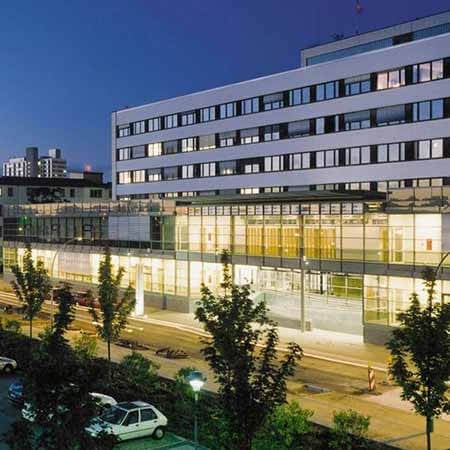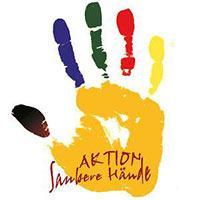About the disease
Stroke can happen if a person experiences dysfunctional blood supply from the heart to brain. As a result brain gets deprived from oxygen cells and big groups of cells die. It was scientifically proved, that nature of stroke among females and men differs in some cases. Causes of stroke among women happen in most cases due to disruptions of either fertile period or menopause, while men mostly have because of unhealthy lifestyle, bad drinking habits and smoking. Because of the notion that disease was caused by absolutely various reasons, men and women very often require different options of treatment. Age range who can suffer from stroke varies from 30-35 years old to an elderly population. Young women have strokes more frequently than men, because during gestation they are more susceptible to disruptions in blood supply. At the age of 75 to 85 years strokes are more characteristic for males and after 85 years - for women. Stroke prognosis is not very satisfactory with 30% of people dying during the first or second month after it. Each year 4 to 5 million strokes are diagnosed worldwide. Because of the stroke 29% of males and 30% of females die. There is also high chance that there will be a new stroke. During the first or second year relapse might occur in 4-24%, over four years in 19%, within seven years from 15 to 35%. The greatest risk begins after 65 years, since 90% of all stroke cases were registered at this age. The widespread reason for the high mortality rate from stroke is the rapid aging of the population and poor stroke prevention. Strokes rarely occur without prior symptoms. People always have initial symptoms and signs of insufficient blood supply to the brain because of hypertensive crises.
The actual stroke is usually a final result:
- Stenosis or block of the main cerebral blood brain vessels - ischemic stroke;
- Bleeding, mainly inside the brain, even though it can happen inside the shell - a hemorrhagic stroke.
Ischemic rupture usually happens because of hypertension and atherosclerosis. It can also develop if a person experienced rheumatism of the heart muscles or blockage of certain arteries, when blood supply to brain got stuck somewhere on the way up. It can also occur if a person had traumatic occlusion of neck blood vessels, when carotid artery got blocked.
Hemorrhagic stroke happens because of arterial aneurysms and arterial hypertension. During hemorrhagic stroke a person experiences rupture of a brain artery. This type of stroke can occur at any age known. Hemorrhage happens when a person suffers from constant high blood pressure, due to problems with arteries.
Arteries can get clogged if a person has an excessive weight or if he smokes a lot. Alcohol and drug consumption destroy arteries as well.
Symptoms
Symptoms of stroke mostly depend on the cause of the disease. In case of prior actual brain damage, patient experiences cerebral symptoms, which include:
- Dizziness
- Nausea
- Discoordination
- Fatigue
If there was also a damage of neurological system, person can have focal symptoms, which are as follows:
- Unexpected paresis, which happens suddenly
- Paralysis
- Impaired vision
- Changed position of the pupils
- Hesitant and rapid speech
- Impaired, unbalanced movements
- Rigidity of certain muscles
Patient with stroke symptoms must immediately be transferred to either neurological department or he can be put into intensive care unit. Every minute counts in this situation, because otherwise he will not be able to recover from stroke. The most favorable outcome is possible if symptoms of stroke were identified prior to the actual attack and a patient was put in intensive care unit.
First signs of a stroke include violation of the head muscles and muscles of the body. If there is a suspicion that a person is in danger he is asked to smile, raise his hands and count till 10. If he can not perform such simple actions this is a sign of stroke. Smiling is the main indicator that there is something wrong. For instance patient with signs of stroke smiles unnaturally, because his lips corners are located in different lines due to the complete inability to move facial muscles freely. Asymmetrical raise of hands is also sign of stroke. Hand of the affected side looks weak and falls after a patient tries to hold it up for a short period of time. Mispronunciation of words or even whole phrases means paresis or paralysis of face muscles. There are other similar tests to identify symptoms of a stroke. Unfortunately signs of a stroke confirm that an irreversible effect on the brain began and person requires immediate medical help. The faster an expert assistance is given to patient, the greater are chances of eliminating the consequences of stroke.
Signs of some types of stroke (for instance, ischemic type) occur prior to the development of brain tissue changes. Such signs are also called initial, first manifestations of insufficient blood supply to the brain. They can be manifested days or even months before the rupture of brain cells. Symptoms of prior stroke include:
- Headache without precise localization
- Dizziness
- Constant noise in the head
- Memory impairment
- Sleep disturbance
Before the arrival of ambulance a patient or somebody who is close to him must write down the name, dosage and frequency of medications taken by the patient. It is important to know if a patient has any drug intolerance which could affect the outcome of a treatment. Also patient needs to know the temperature of his body. If he has fever, consequences of stroke might be harsher. High temperature has negative impact on the outcome of stroke. Also low temperature can cause disorder of cerebral circulation. The pathogenesis of stroke is largely determined by the state of the patient thermoregulation. If temperature is either too high or too low, a patient can have coma. Hyperthermia is diagnosed in 30-60% of patients with haemorrhagic stroke and 17-50% with ischemic stroke. Because of the hyperthermia during stroke, patient may develop later such complications as pneumonia, urinary tract infections and pressure ulcers.
Diagnosis
To determine the most appropriate method of treatment doctor needs to find out what subtype of stroke a patient is having and which parts of the brain were affected. It is necessary to rule out other possible causes of the symptoms, such as brain tumor or negative reaction to certain drugs. A doctor may use the following tests to diagnose stroke:
- Physical examination. The doctor will ask a patient or his family member about the symptoms of the disease, the time of its occurrence and the medicines which patient took. He also needs to determine if a person had some head injury, which could cause the stroke symptoms. Doctor may also use a special device called ophtalmoscope to check for signs of blood clots in the blood vessels.
- Blood tests. Blood tests can provide important information about the level of sugar in the blood, the presence of an infection and level of basic chemicals in the blood to choose a method of treatment of stroke.
- Computed tomography, which is a CT brain imaging, plays a cardinal role in determining the exact subtype of stroke. Computed tomography with angiography is a specialized method that uses injection of contrast material into the vein. This injection helps create 3-D images of blood vessels in the neck and brain. Doctors use this study for detecting aneurysms and arteriovenous malformations to estimate the degree of narrowing of the arteries. CT angiography can provide precise brain image and show hemorrhage, if there is one.
- Magnetic resonance imaging, also known as MRI, creates 3-D image radio waves of the brain of the brain. MRI can detect damage to the brain tissue if a person has ischemic stroke. Magnetic resonance angiography (MRA) uses magnetic fields, radio waves and a dye that is introduced into the vein for evaluation of the neck arteries and the brain.
- Ultrasound examination of the carotid arteries may indicate the presence or narrowing of the arteries in the carotid artery.
- Arteriography can show the state of arteries and detect if there any clogs, that can cause thrombosis.
- Echocardiography is also a very common type of diagnosis. Ultrasonic technology creates not only an image of the brain, but also an image of the heart, which allows the doctor to detect blood clots in heart cavities.
Treatment
Stroke treatment depends on the time when stroke was diagnosed. In the first hours after rupture, the most effective treatment for stroke is surgical intervention. If a person has intracerebral hematoma, a catheter is used to perform coagulation of blood clots, sealing the vessel and terminating intracerebral hemorrhage. If brain stem was damaged, patient needs surgery of brain stem. If the cerebellar vessels of the cerebellum were affected, treatment is not possible.
Stroke treatment during first hours is the most crucial. In most cases patient develops hematoma and then it needs to be treated by craniotomy (pinching) of the damaged vessel. Doctors can also perform drainage of hematomas, which allows avoiding of the brain compression. If a person has an ischemic stroke, first hours of ischemic stroke he may need re-infusion of thrombolytic drugs that restore ischemic neurons
The treatment for stroke during the first days after rupture differs a little bit. In the first days of stroke, treatment is carried out in a hospital. During the first 3 days it is recommended to perform ultrasound and X-ray of the skull to identify the location and size of the lesion. Also patients are required to undergo examination of the heart, such as ECG and echocardiography. Accurate diagnosis that reflects the location and nature of stroke is established during computed tomography or magnetic resonance imaging. Cerebral angiography and other methods are also taken into account during these first days.
The first weeks after a stroke a person enters into rehabilitation stage, when doctors try to prevent any complications. Various specialists coordinate courses of medication and rehabilitation therapy. It must be done because there would be a disorder of cerebral circulation after the rupture. Disorder of cerebral circulation can lead to formation of pathological focus in the brain. As it was mentioned above, many brain cells die during the stroke, that is why it`s vital to constitute lost nerve cells and cells near the affected area. Timely therapeutic measures can restore their activity. Therefore, it is a necessary to engage a patient with physiotherapy. Physical exercise stimulates the ability of nerve endings to reactivate and start working again.
Authors:
This article was edited by medical experts, board-certified doctors Dr. Nadezhda Ivanisova, and Dr. Bohdan Mykhalniuk. For the treatment of the conditions referred to in the article, you must consult a doctor; the information in the article is not intended for self-medication!
Our editorial policy, which details our commitment to accuracy and transparency, is available here. Click this link to review our policies.














